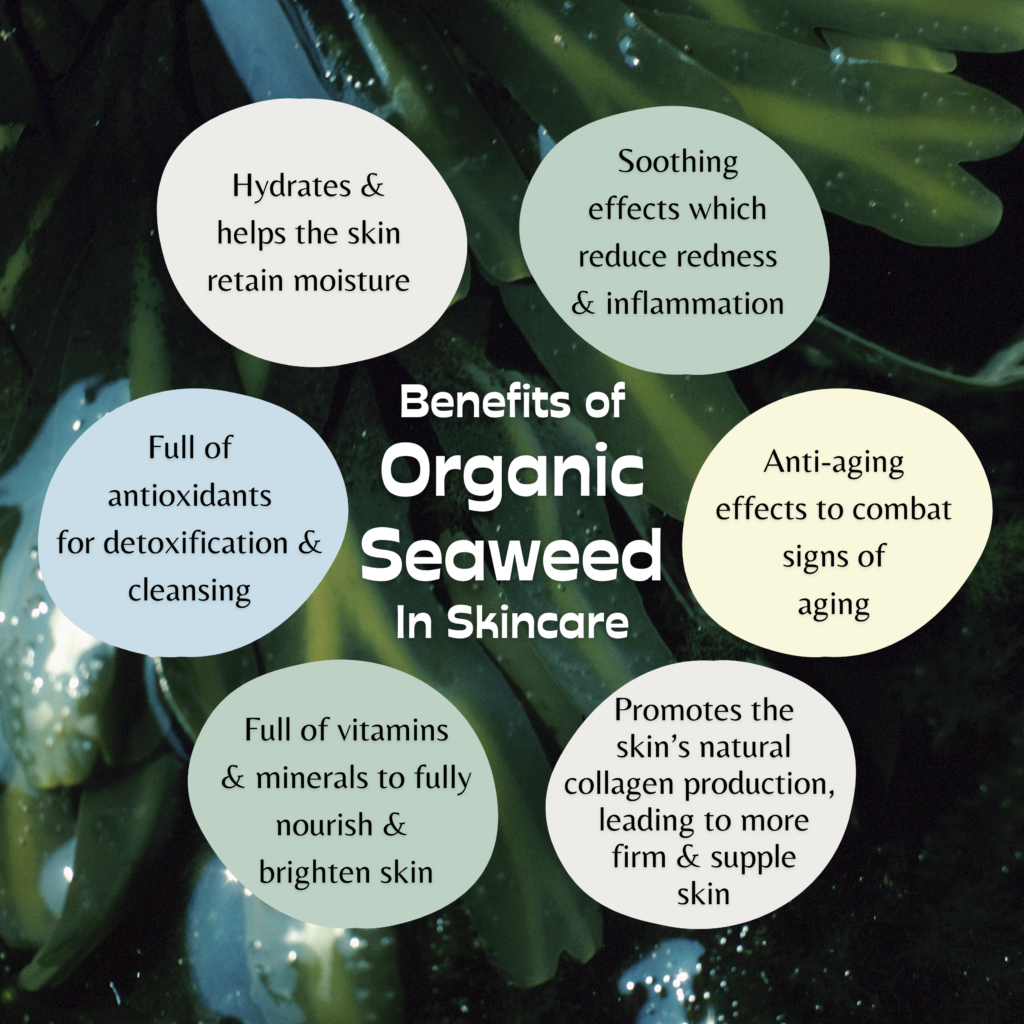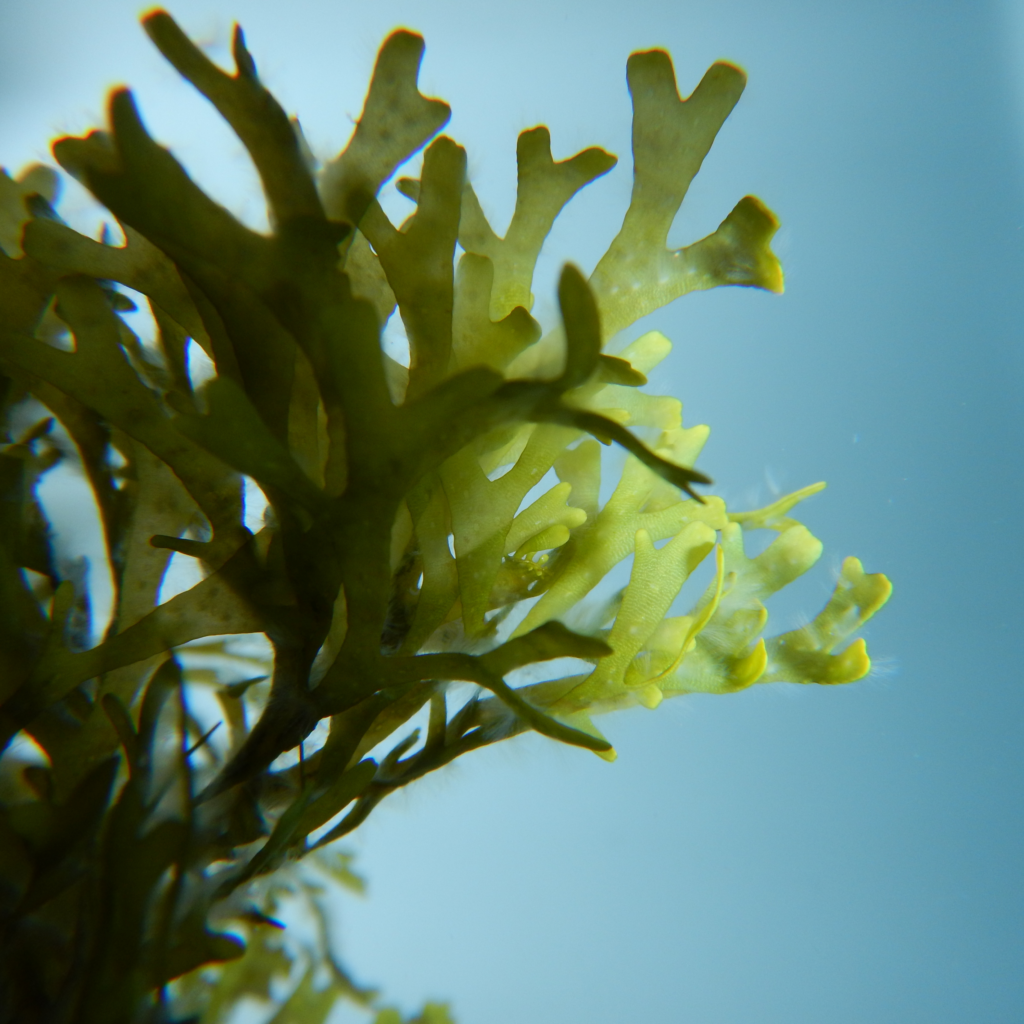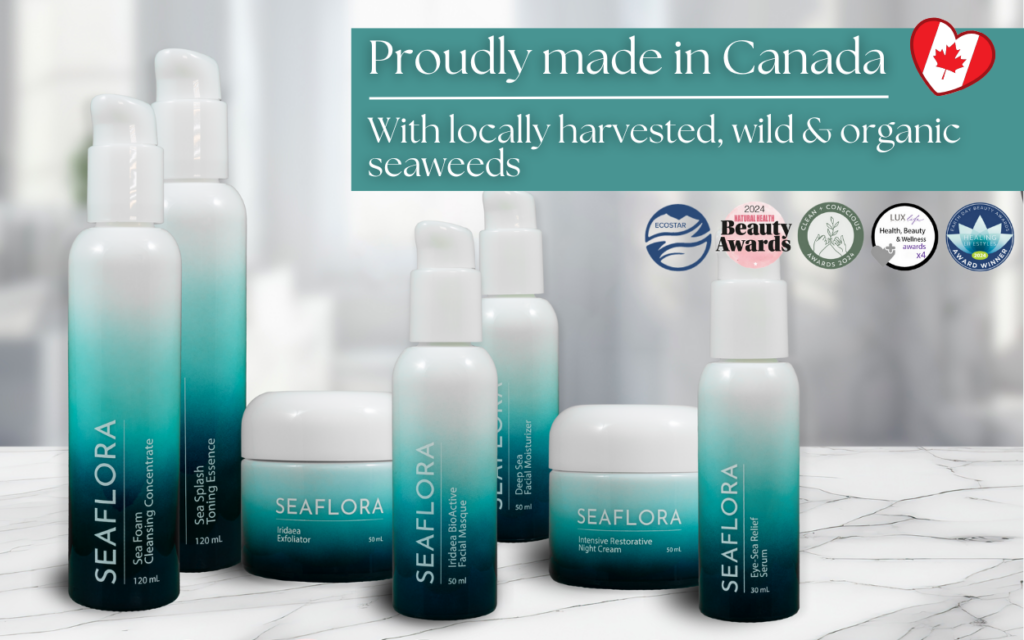Perioral Dermatitis & Seaweed – Unlocking Solutions for Better Skin Health
Perioral dermatitis is a challenging skin condition that affects many individuals, causing discomfort and cosmetic concerns. In recent years, there has been growing interest in natural remedies for various skin conditions. Seaweed has emerged as a promising candidate for managing perioral dermatitis. Today we’ll delve deep into the potential benefits of seaweed for perioral dermatitis, exploring both topical applications and consumption. We’ll go over scientific evidence supporting these claims and provide insights into how you can incorporate seaweed into your skincare.
Understanding Perioral Dermatitis
Before we dive into the benefits of seaweed, we need to understand what perioral dermatitis is. Perioral dermatitis is a common inflammatory skin condition that typically appears around the mouth, nose, and sometimes the eyes. It’s characterized by small red bumps, mild scaling, and occasional itching or burning sensations. The exact cause of perioral dermatitis is not fully understood. We do know that the use of topical steroids, certain skincare products, and hormonal changes may contribute to its development.
The Power of Seaweed in Skincare
Seaweed has been used in skincare for centuries, particularly in coastal regions where it’s abundant. Its rich mineral content and unique bioactive compounds make it a valuable ingredient in many cosmetic formulations. Seaweed offers several potential benefits for perioral dermatitis that may help alleviate symptoms and improve overall skin health.
Topical Application Benefits of Seaweed for Perioral Dermatitis
1. Anti-inflammatory Effects
One of the most significant benefits of seaweed for perioral dermatitis is its anti-inflammatory properties. Inflammation is a key component of perioral dermatitis, contributing to redness, swelling, and discomfort. Seaweed, particularly Seaweed Fulvescens, have been shown to suppress pro-inflammatory cytokines. These are signaling molecules that promote inflammation in the body. The ability of seaweed to reduce inflammation can be particularly beneficial for those suffering from perioral dermatitis. By applying seaweed-based products topically, you may be able to calm irritated skin and reduce the visible signs of inflammation. This can lead to a reduction in redness and swelling, providing relief from the most bothersome symptoms of perioral dermatitis.
2. Moisturizing and Repairing Properties
Dry, damaged skin is often more susceptible to irritation and inflammation. Seaweed components in cosmetics have been shown to improve skin conditions by moisturizing and repairing the skin. This dual action can be particularly beneficial for those with perioral dermatitis, as it helps to restore the skin’s natural barrier function.The moisturizing properties of seaweed are attributed to its high content of polysaccharides, which can form a protective film on the skin’s surface. This film helps to lock in moisture, preventing water loss and keeping the skin hydrated.
Additionally, seaweed contains various minerals and vitamins that can nourish the skin, promoting its natural repair processes. By using seaweed-based moisturizers or serums, you may be able to improve the overall health and appearance of your skin, potentially alleviating some of the dryness and flakiness associated with perioral dermatitis.
3. Gentle on Sensitive Skin
One of the challenges in treating perioral dermatitis is finding products that are effective yet gentle enough for sensitive skin. Many individuals with this condition find that their skin becomes easily irritated by conventional skincare products. This is where seaweed-based cosmeceuticals shine. Seaweed-based skincare products are generally non-irritating, making them suitable for sensitive skin conditions like perioral dermatitis.
The natural compounds in seaweed work in harmony with the skin, providing benefits without causing further irritation. This gentle nature is crucial for those with perioral dermatitis, as it allows for consistent use without exacerbating the condition.When choosing seaweed-based products for perioral dermatitis, look for those that are specifically formulated for sensitive skin. These products often have minimal ingredients and are free from common irritants such as fragrances, dyes, and harsh preservatives.
4. Exfoliating and Soothing Properties
Exfoliation can be a double-edged sword for those with perioral dermatitis. While it’s important to remove dead skin cells and unclog pores, harsh exfoliants can irritate the skin and worsen symptoms. This is where products like Aalgo seaweed paste come into play. Aalgo seaweed paste and similar products can help exfoliate the skin gently while also providing a soothing effect. The fine particles in seaweed-based exfoliants can help remove dead skin cells without causing excessive irritation.
At the same time, the natural compounds in seaweed work to calm and soothe the skin, reducing itchiness and promoting healing of raw areas. Regular, gentle exfoliation with seaweed-based products can help improve skin texture and appearance, potentially reducing the visibility of perioral dermatitis symptoms. However, it’s crucial to use these products sparingly and gently, as over-exfoliation can lead to further irritation.
Benefits of Seaweed Consumption for Perioral Dermatitis
While topical application of seaweed can provide direct benefits to the skin, consuming seaweed as part of your diet may also contribute to improved skin health and potentially help manage perioral dermatitis symptoms.
1. Antioxidant Properties
One of the key benefits of consuming seaweed is its high antioxidant content. Antioxidants play a crucial role in protecting our cells, including skin cells, from damage caused by free radicals. Free radicals are unstable molecules that can cause oxidative stress, leading to inflammation and premature aging of the skin.By consuming seaweed, you can enhance your skin’s antioxidant capacity, potentially improving overall skin health and resilience against dermatitis. The antioxidants in seaweed may help neutralize free radicals, reducing oxidative stress and inflammation in the skin. This could potentially lead to a reduction in perioral dermatitis symptoms and improved overall skin health.
Some of the antioxidants found in seaweed include:
- Fucoxanthin: A carotenoid with potent antioxidant properties
- Polyphenols: Plant compounds known for their antioxidant effects
- Vitamins C and E: Essential vitamins with strong antioxidant capabilities
Incorporating various types of edible seaweed into your diet can help ensure you’re getting a diverse range of antioxidants. Some popular edible seaweeds include nori, wakame, and dulse.
2. Immune System Support
Another potential benefit of seaweed consumption is its ability to support the immune system. While the exact mechanisms are still being studied, seaweed is believed to have immune-boosting properties that might help in managing skin conditions like perioral dermatitis.The immune system plays a crucial role in skin health, helping to fight off pathogens and regulate inflammation. By supporting immune function, seaweed consumption may help your body better manage inflammatory skin conditions like perioral dermatitis.
Some of the compounds in seaweed that may contribute to immune support include:
- Fucoidan: A sulfated polysaccharide found in brown seaweeds that has been shown to have immunomodulatory effects
- Beta-glucans: Complex sugars that can stimulate the immune system
- Minerals such as zinc and selenium, which are important for immune function
While more research is needed to fully understand the impact of seaweed consumption on skin conditions like perioral dermatitis, incorporating seaweed into your diet as part of a balanced eating plan may offer potential benefits for overall skin health and immune function.
How to Incorporate Seaweed into Your Skincare Routine
If you’re interested in harnessing the potential benefits of seaweed for your perioral dermatitis, there are several ways you can incorporate it into your skincare routine:
- Seaweed-based cleansers: Look for gentle cleansers that contain seaweed extracts. These can help cleanse the skin without stripping it of its natural oils.
- Seaweed masks: Apply a seaweed-based mask once or twice a week to provide intensive nourishment and soothing effects to your skin.
- Seaweed-based serums: Use a seaweed-infused serum daily to help hydrate and repair the skin.
- Seaweed moisturizers: A seaweed-based moisturizer used daily helps to hydrate, repair and soothe skin.
- Seaweed-based exfoliants: Gently exfoliate once or twice a week with a seaweed-based product to remove dead skin cells and promote skin renewal.
- Seaweed supplements: Consider taking seaweed supplements under the guidance of a healthcare professional to potentially boost your skin’s health from within.
Precautions and Considerations
While seaweed can offer numerous benefits for perioral dermatitis, it’s important to keep a few things in mind:
- Patch test: Always perform a patch test before using any new skincare product, especially if you have sensitive skin or are prone to allergies.
- Consistency: For best results, use seaweed-based products consistently as part of your skincare routine.
- Quality matters: Choose high-quality seaweed products from reputable brands to ensure you’re getting the full benefits without any harmful additives.
- Consult a professional: If you have severe perioral dermatitis or any concerns about using seaweed products, consult with a dermatologist or healthcare provider.
- Balanced approach: Remember that while seaweed can be beneficial, it should be part of a comprehensive skincare routine and healthy lifestyle.
So, Can Seaweed Be a Remedy for Perioral Dermatitis?
Seaweed offers a promising natural approach to managing perioral dermatitis symptoms. Its anti-inflammatory, moisturizing, and antioxidant properties make it a valuable ingredient in both topical skincare products and as a dietary supplement. By incorporating seaweed into your skincare routine and diet, you may be able to improve your skin’s health and resilience against perioral dermatitis.
However, it’s important to remember that everyone’s skin is different, and what works for one person may not work for another. Be patient when trying new skincare approaches, and give your skin time to adjust. If you don’t see improvements or if your symptoms worsen, consult with a dermatologist for personalized advice.As research continues to explore the benefits of natural ingredients like seaweed for skin health, we may discover even more ways to harness the power of the sea for beautiful, healthy skin. In the meantime, embracing seaweed as part of your skincare routine may be a step towards calmer, healthier skin for those dealing with perioral dermatitis.
Sources:










